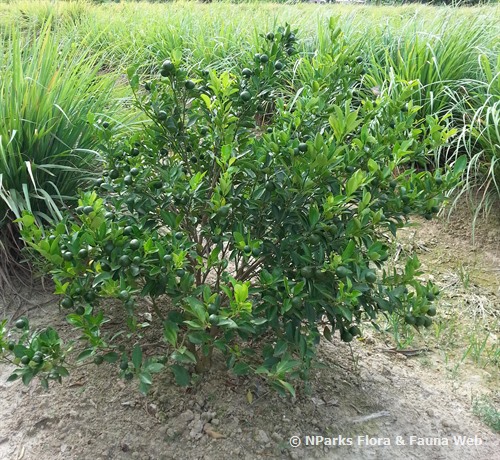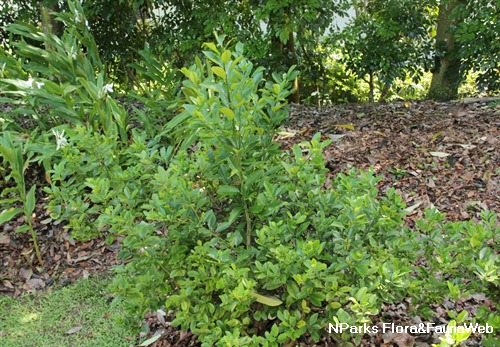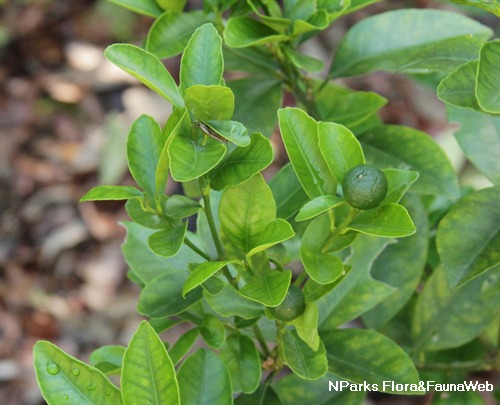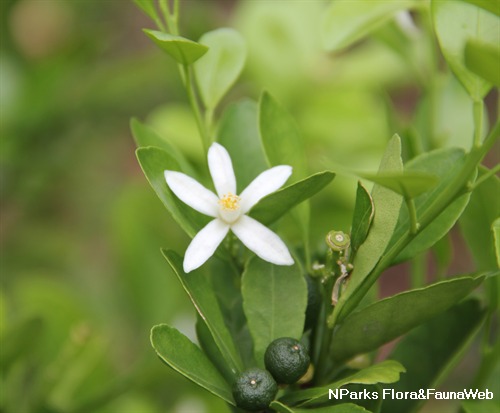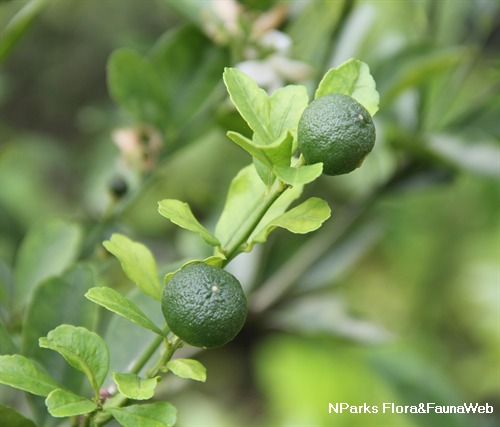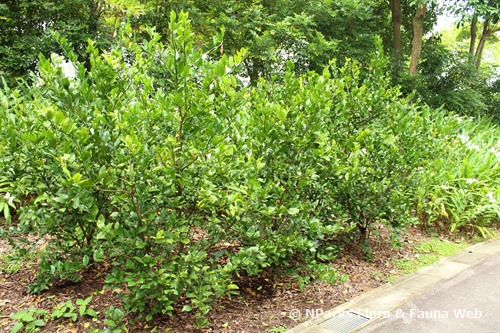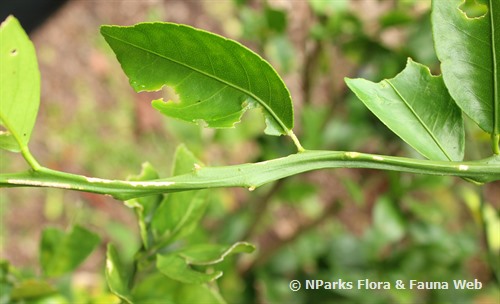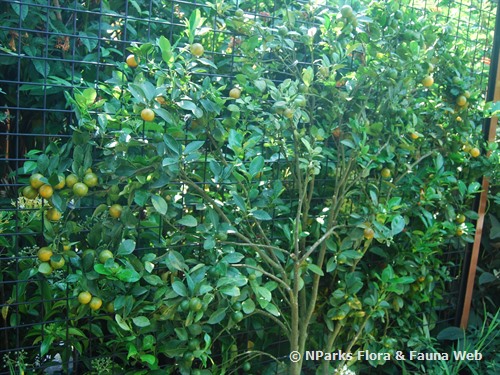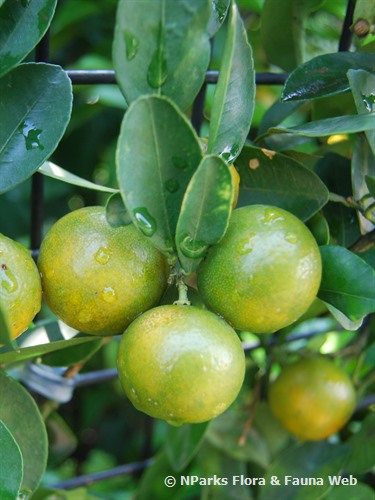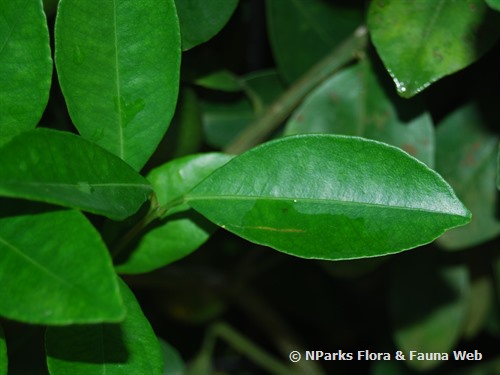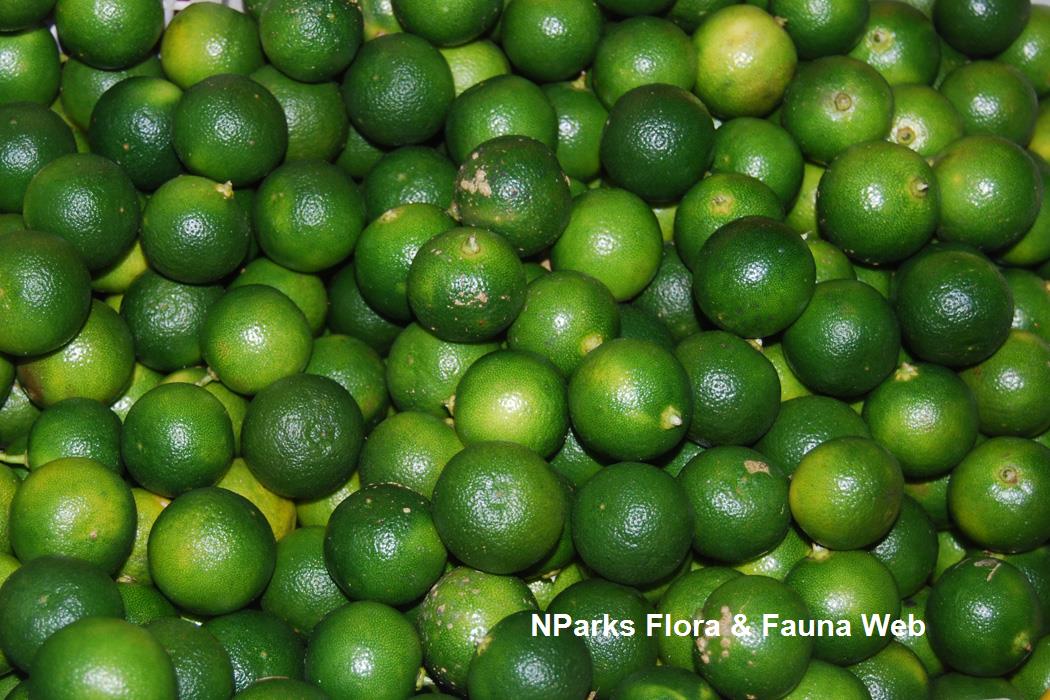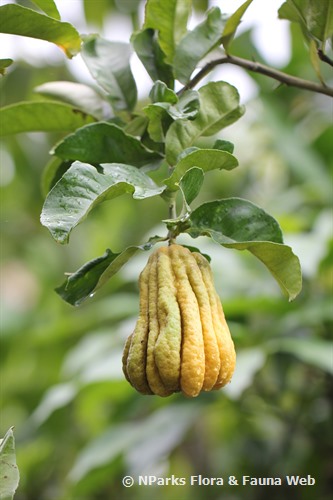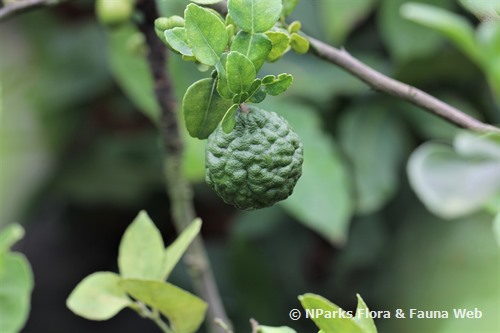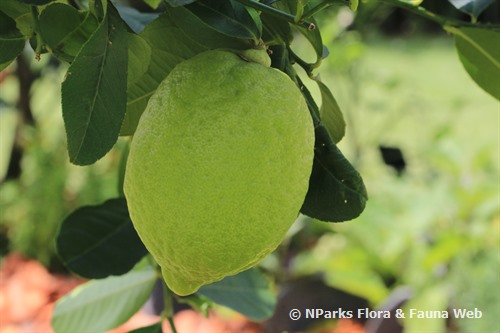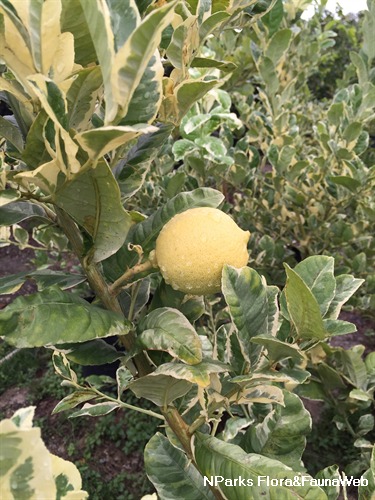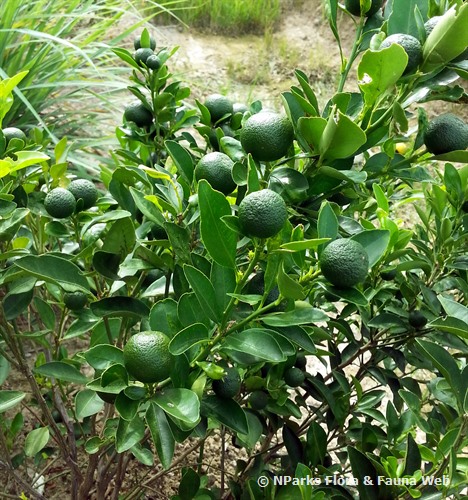
Back
Citrus × microcarpa
| Family Name: | Rutaceae |
| Synonyms: | Citrus madurensis, Citrus mitis, Citrus microcarpa, x Citrofortunella mitis, x Citrofortunella microcarpa |
| Common Name: | Calamansi, Limau Kasturi, Calamondin, Musk Lime, Panama Orange, Golden Lime, China Orange |
Name
Classifications and Characteristics
| Plant Division | Angiosperms (Flowering Seed Plants) (Dicotyledon) |
|---|---|
| Plant Growth Form | Shrub |
| Mode of Nutrition | Autotrophic |
Biogeography
| Native Distribution | China |
|---|---|
| Native Habitat | Terrestrial |
| Preferred Climate Zone | Tropical |
| Local Conservation Status | Non-native |
Description and Ethnobotany
| Growth Form | Medium-sized shrub, sometimes a small tree, able to grow up to 3 - 4 m tall. |
|---|---|
| Foliage | Simple leaves, elliptic-shaped and aromatic, measuring about 3 - 7 cm long; dark-green on the top surface and light to pale green on the underneath. |
| Stems | Sparsely spiny along the stems. |
| Flowers | White to whitish-pink fragrant flowers, can be axillary or terminal; 5-petaled, each petal measuring about 1 - 1.5 cm long |
| Fruit | Small and rounded fruits, turning from green to light orange when becoming ripe. |
| Etymology | Genus Citrus refers to the lemon-scented fragrance from the plant. Species microcarpa means small-fruited. |
| Ethnobotanical Uses | Food (Fruit or Vegetable): Can be eaten fresh or made into juice or marmalade. (Herb or Spice): Used as a seasoning in meat and seafood dishes. Medicinal: Juice made from the fruits can be used to relieve coughs and colds |
Landscaping Features
| Desirable Plant Features | Ornamental Flowers, Fragrant (Flowers, Foliage), Ornamental Fruits |
|---|---|
| Landscape Uses | General, Container Planting, Parks & Gardens, Small Gardens |
Fauna, Pollination and Dispersal
| Fauna Pollination Dispersal Associated Fauna | Butterfly Host Plant |
|---|
Plant Care and Propagation
| Light Preference | Full Sun, Semi-Shade |
|---|---|
| Water Preference | Moderate Water |
| Rootzone Tolerance | Easy to Grow, Moist Soils, Well-Drained Soils |
| Propagation Method | Seed |
Foliar
| Foliage Retention | Evergreen |
|---|---|
| Mature Foliage Colour(s) | Green |
| Foliar Type | Simple / Unifoliate |
| Foliar Attachment to Stem | Petiolate |
Floral (Angiosperm)
| Flower & Plant Sexuality | Bisexual Flowers |
| Flower Colour(s) | White |
|---|---|
| Flower Grouping | Solitary |
| Flower Location | Axillary, Terminal |
Image Repository
Others
| Master ID | 19484 |
|---|---|
| Species ID | 3351 |
| Flora Disclaimer | The information in this website has been compiled from reliable sources, such as reference works on medicinal plants. It is not a substitute for medical advice or treatment and NParks does not purport to provide any medical advice. Readers should always consult his/her physician before using or consuming a plant for medicinal purposes. |

